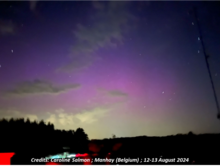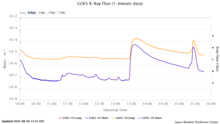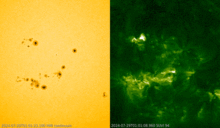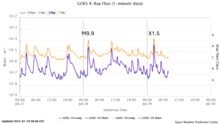news
Submitted on 2024-08-21
PITHIA-NRF launches its seventh call. Apply and come visit the STCE!
Submitted on 2024-08-14
NOAA 3784 joined the club of X-class flare producing regions by unleashing an X1.1 on 14 August.
Submitted on 2024-08-08
NOAA 3777 produced an X1.3 flare on 8 August. The associated CME has an earth-directed component. ***UPDATED (3)***
Submitted on 2024-08-06
Driven by solar activity in especially the southern solar hemisphere, sunspot numbers reached their highest monthly values since December 2001.
Submitted on 2024-08-05
An X1.7 flare was produced on 5 August at 13:40UTC. It was followed by an X1.1 flare at 15:27UTC produced by a different active region. ***UPDATED***
Submitted on 2024-07-30
An overview and movie of some spectacular solar and space weather events in 2023 are available at the STCE's solar cycle highlights webpage.
Submitted on 2024-07-29
An M9.9 flare and an X1.5 flare were observed from the same active region NOAA 3766 on resp. 28 and 29 July.
Submitted on 2024-07-23
Old NOAA 3738 produced a very strong X-class flare late on 22 July. Solar Orbiter's STIX instrument indicates this might have been an X14 flare. The associated CME is heading away from Earth, towards Solar Orbiter. ***UPDATED***
Submitted on 2024-07-22
Preliminary sunspot numbers during last week were the highest in 22 years.
Submitted on 2024-07-14
NOAA 3738 produced an X1.2 flare on 14 July 2024. ***UPDATED (2)***
Pages
Zircon - This is a contributing Drupal Theme
Design by
WeebPal.







































































